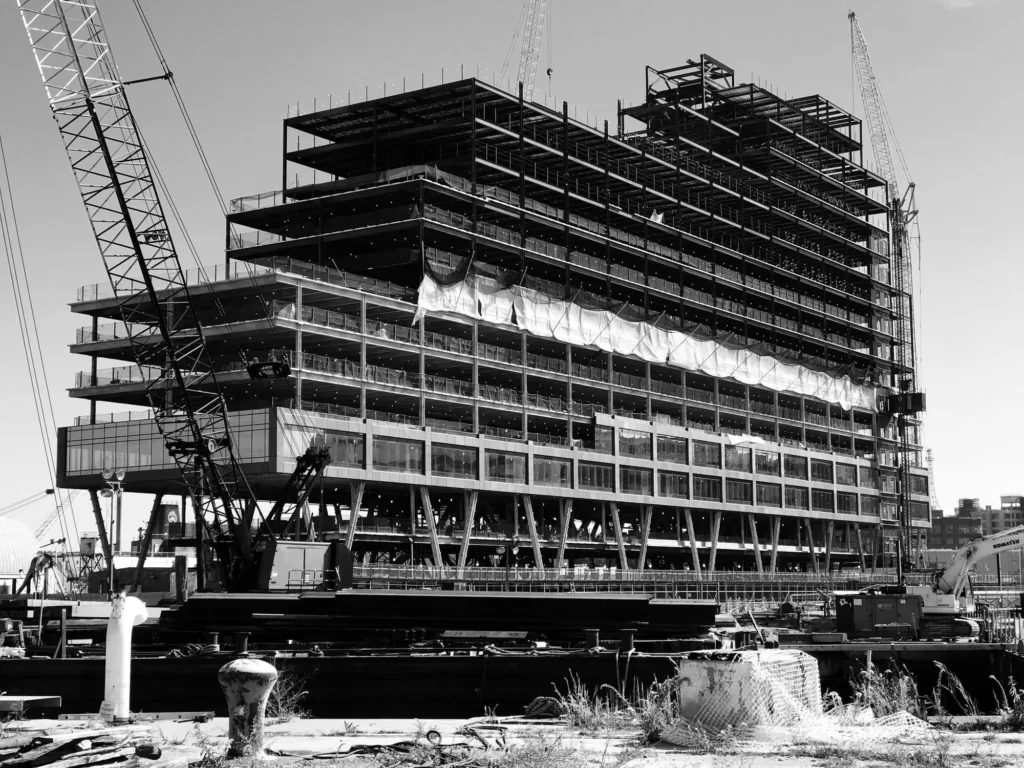If you want to know about the importance of building structure in architecture or landscape garden or Introduction of landscaping and its role, please click the link.
Building structure refers to the skeletal framework of a building, which includes columns, beams, walls, and other elements that provide support and stability to the building. The building structure is a crucial aspect of architecture, as it determines the safety, stability, and overall performance of a building.

Importance of the building structure
The importance of building structure in architecture cannot be overstated. A well-designed building structure not only provides stability and safety but also contributes to the functionality, aesthetics, and sustainability of a building. Understanding the role of building structure in architecture is essential for architects, designers, and engineers to create efficient, safe, and sustainable buildings.
Thesis Statement
The building structure is a crucial element of architecture that plays a significant role in shaping the form, function, and overall performance of a building.
This article will explore the importance of building structure in architecture, including safety and stability, structural integrity and functionality, aesthetics and architectural design, and sustainability, with the aim of highlighting the need for architects and designers to prioritize building structure in their designs.
1) Safety and Stability
Building structure plays a critical role in ensuring the safety and stability of a building. A well-designed and well-executed building structure provides stability and support to the building, protecting it from collapse, and keeping occupants safe.
Examples of building collapses due to structural failures are tragic reminders of the importance of building structure. For instance, the 2018 collapse of the Morandi Bridge in Genoa, Italy, caused over 40 fatalities and raised questions about the role of structural design in ensuring safety. Another example is the collapse of the Champlain Towers South condominium in Surfside, Florida in 2021, where the building’s structure was found to be a contributing factor to the collapse.

Building codes (NBC-2016) play a critical role in ensuring safety and stability in building design. These codes set the minimum standards for building design, materials, and construction practices to ensure that buildings are safe and stable. Compliance with building codes is mandatory, and non-compliance can result in fines, legal action, and potential harm to the building’s occupants.

In conclusion, the importance of structural stability and safety in building design cannot be overstated. Examples of building collapses due to structural failures serve as a reminder that the safety of building occupants depends on the soundness of the building structure.
Building codes play a vital role in ensuring that building structure meet the minimum standards for safety and stability, and architects and designers must prioritize building structure in their designs to ensure the safety of occupants.
2) Structural Integrity and Functionality
Building structure is also crucial in achieving the desired building functionality. A well-designed building structure ensures that the building can withstand the intended load and stress while maintaining its integrity. Structural integrity enables the building to function as intended, providing the necessary space and support for its occupants.
How building structure affects the layout and organization of interior spaces is another crucial aspect. The building structure determines the location of load-bearing walls, columns, and other structural elements, which can affect the placement of interior walls and other features. The structural design can also influence the layout of rooms and the use of open spaces.
Examples of building designs where structural elements are integrated into the overall design and function of the building are numerous. For instance, the Sydney Opera House, designed by Jørn Utzon, has a unique shell-like structure that not only provides structural support but also contributes to the building’s aesthetic appeal. Another example is the John Hancock Center in Chicago, designed by Fazlur Rahman Khan, which features a unique structural design that allows for uninterrupted views from the building’s interior spaces.

In conclusion, the importance of structural integrity in achieving desired building functionality cannot be overstated. Building structure affects the layout and organization of interior spaces, and architects and designers must consider the placement of structural elements in their designs.
Examples of building designs where structural elements are integrated into the overall design and function of the building illustrate the importance of considering structural design in achieving both aesthetic and functional goals.
3) Aesthetics and Architectural Design
Building structure plays a crucial role in contributing to the aesthetic appeal of a building. The structural design of a building can add visual interest, texture, and depth, and even become a defining feature of the building’s design.
Examples of building where structural elements are prominently displayed or incorporated into the design are numerous. For instance, the Eiffel Tower in Paris, designed by Gustave Eiffel, is a prime example of a structure that is both functional and visually striking. The Sydney Harbour Bridge is another example of a structure that is an iconic part of a city’s skyline.

Building structure can also influence the form and shape of a building. The choice of materials and the placement of structural elements can impact the building’s overall shape and profile. Architects and designers can use structural design to create buildings with unique shapes and forms, such as the Guggenheim Museum in Bilbao, designed by Frank Gehry, which features a distinctive curving form.

In conclusion, building structure plays a crucial role in contributing to the aesthetic appeal of a building. Structural elements can become defining features of a building’s design, adding visual interest and texture. Examples of buildings where structural elements are prominently displayed or incorporated into the design illustrate the importance of considering structural design in achieving both aesthetic and functional goals.
Building structure can also influence the form and shape of a building, providing architects and designers with opportunities to create unique and memorable designs.
4) Sustainability in Building Structure Design
Building structure design plays a crucial role in achieving sustainability in the construction and operation of buildings. Sustainable building design aims to minimize the environmental impact of buildings, reduce energy consumption and costs, and improve occupant health and well-being.
The impact of building structure on energy efficiency and environmental impact is significant. Building structure design affects the thermal performance of the building, including its insulation, ventilation, and heating and cooling systems. The choice of materials and construction methods can also impact the building’s carbon footprint and waste generation.
Examples of sustainable building design principles and materials used in building structure design include the use of renewable energy sources, such as solar panels and wind turbines, and the use of high-performance insulation materials, such as cellulose and spray foam insulation. Other examples of sustainable building design principles include using natural ventilation and daylighting, incorporating green roofs and walls, and using recycled or locally sourced building materials.
In conclusion, sustainable building structure design is critical to achieving sustainable building construction and operation. Building structure design impacts energy efficiency and environmental impact, and architects and designers must consider the use of sustainable materials and construction methods.
Examples of sustainable building design principles and materials illustrate the importance of considering sustainability in building structure design to minimize the environmental impact of buildings, reduce energy consumption and costs, and improve occupant health and well-being.
5) Summary and Call to Action
In summary, building structure plays a critical role in architecture, impacting the safety, stability, functionality, and aesthetics of buildings. Structural stability and safety are essential in building design, and architects and designers must prioritize the use of building codes to ensure that buildings are safe and structurally sound.
Building structure also impacts the functionality and organization of interior spaces, and architects and designers must consider how structural elements can be integrated into the overall design and function of the building.
Building structure also contributes to the aesthetic appeal of a building, and architects and designers can use structural design to create buildings with unique shapes and forms.
Finally, sustainable building structure design is critical in achieving sustainable building construction and operation. Architects and designers must prioritize the use of sustainable materials and construction methods to minimize the environmental impact of buildings, reduce energy consumption and costs, and improve occupant health and well-being.
In light of the importance of building structure in architecture, architects and designers must prioritize building structure in their designs. They should consider the safety, functionality, aesthetics, and sustainability of building structures in their designs, using best practices and innovative approaches to create buildings that are both beautiful and functional.
In conclusion, building structure is a crucial aspect of architecture, and architects and designers must prioritize it in their designs to create safe, functional, beautiful, and sustainable buildings.